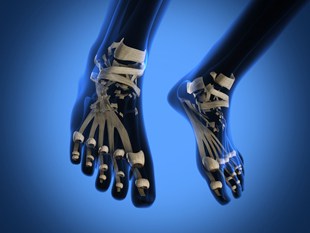Hydroxyapatite Fact Sheet
About Hydroxyapatite
Hydroxyapatite, or microcrystalline hydroxyapatite concentrate (MCHC), is a matrix of calcium, other minerals and organic compounds such as collagen and bone-growth peptides that compose skeletal bone in the human body. It is also a nutritional supplement chemically similar to human bone promoted for preventing and treating osteoporosis. Hydroxyapatite’s composition is unique in that it is bioactive and living, which stimulates bone growth and integration.
Hydroxyapatite and Aging
Osteoporosis is a bone density disorder that 33% of female and 20% of male older adults will experience in a lifetime as an osteoporotic fracture. In fact, osteoporosis causes a bone fracture every three seconds, making a total of 8.9 million incidences worldwide annually (5). Taking a hydroxyapatite supplement is more effective for preventing bone loss compared with calcium carbonate according to a study that followed patients with osteoporosis for 20 months. Following the administration of 1400 mg of a supplement daily, at the end of the study, the hydroxyapatite group bone density was only 0.8% lower while the bone density for the calcium carbonate group reduced by 1.8% (1).
Do I Have a Hydroxyapatite Deficiency?
A bone mineral density (BMD) test can be administered by a physician.
Supplementing with Hydroxyapatite
Many hydroxyapatite supplement formulas have different combinations of ingredients, and finding one made by a reputable company is important because some may absorb and stimulate bone integration more effectively than others.
How Much Hydroxyapatite Should I Take?
A recommended standard dose appropriate to prevent osteoporosis is 1800 mg per day.
Side Effects
Taking Hydroxyapatite supplements can result in constipation. This is the most common side effect with calcium supplementation with a rate of 15%, lower with hydroxyapatite at 4%.
The body’s ability to absorb calcium and other minerals may decline with age, however, the minerals in hydroxyapatite are bioavailable and may be well absorbed.
Contraindications
A Hydroxyapatite supplement may contraindicate with the following medications:
- Biphosphates
- Alendronate (Fosamax)
- Ibandronate (Boniva)
- Etidronate (Didronel)
- Risedronate (Actonel)
- Tiludronate (Skelid)
- Zoledronic acid (Reclast)
- Blood pressure medications — atenolol (Tenormin), propranolol (Inderal, Inderal LA) and metoprolol (Lopressor, Toprol-XL), among others.
- Calcium-channel blockers include amlodipine (Norvasc), nifedipine (Procardia) and diltiazem (Cardizem)
- Antacids that contain aluminum
- Cholesterol-lowering medications — bile acid sequestrants, including colestipol (Colestid), cholestyramine (Questran) and colesevelam (Welchol)
- Calcipotriene (Dovenex)
- Corticosteroids (prednisone)
- Digoxin
- Sotalol (Betapace)
- Diuretics (water pills)
- Thiazide diuretics — chlorothiazide (Diuril), ghlorthalidone (Hygroton), hydrochlorothiazide, indapamide (Lozol), metolozone (Zaroxolyn) and polythiazide (Renese), among others.
- Loop diuretics — bumetanide (Bumex) and furosemide (Lasix)
- Amiloride (Midamor.
- Estrogen medications
- Thyroid
- Gentamicin
- Antibiotics
- Quinolones — ciprofloxacin (Cipro), norfloxacin (Noroxin), levofloxacin (Levaquin) and ofloxacin (Floxin)
- Anti-seizure medications — carbamazepine (Tegretol), phenytoin (Dilantin), phenobarbitol and primidone (Mysoline)
- Tetracyclines — doxycycline, minocycline, and tetracycline
References
- Castelo-Branco, Camil MD, PhD., et al. Menopause. “Efficacy of ossein-Hydroxyapatite Complex Compared with calcium Carbonate to Prevent Bone Loss: A Meta-analysis. September/October 2009. http://www.ncbi.nlm.nih.gov/pubmed/19407667
- The Cleveland Clinic Wellness. “Ossien Hydroxyapatite Pro Con.”
http://www.clevelandclinicwellness.com/Features/Pages/OssienHydroxyapatite.aspx - University at Buffalo The State University of New York. “Osteoporosis.”
http://www.acsu.buffalo.edu/~shlevy/osteo.htm - Straub, Deborah. Nutrition in Clinical Practice. “Calcium Supplementation in Clinical Practice: A Review of Forms, Doses, and Indications.” 2007. http://ncp.sagepub.com/content/22/3/286
Last Reviewed 15/Mar/2014
